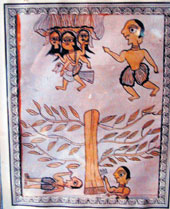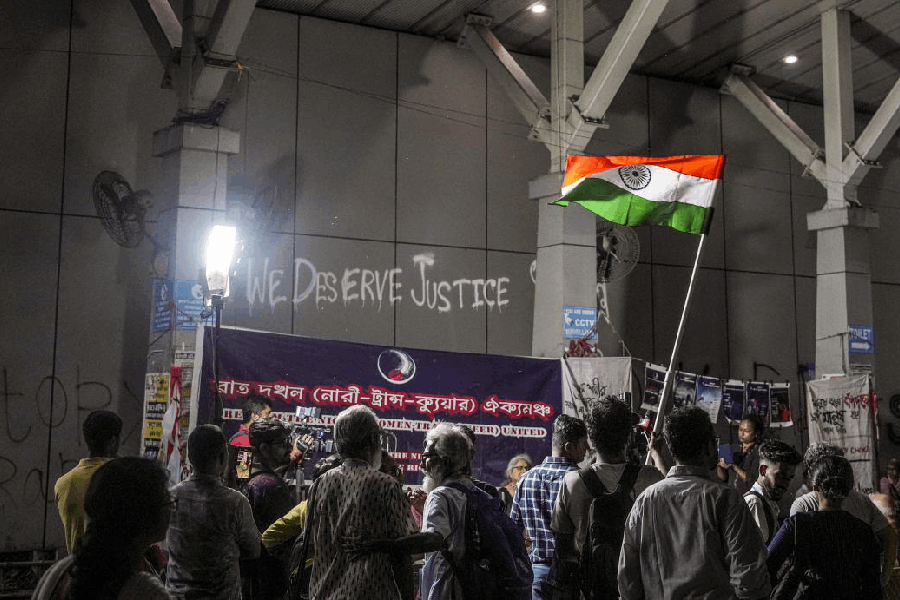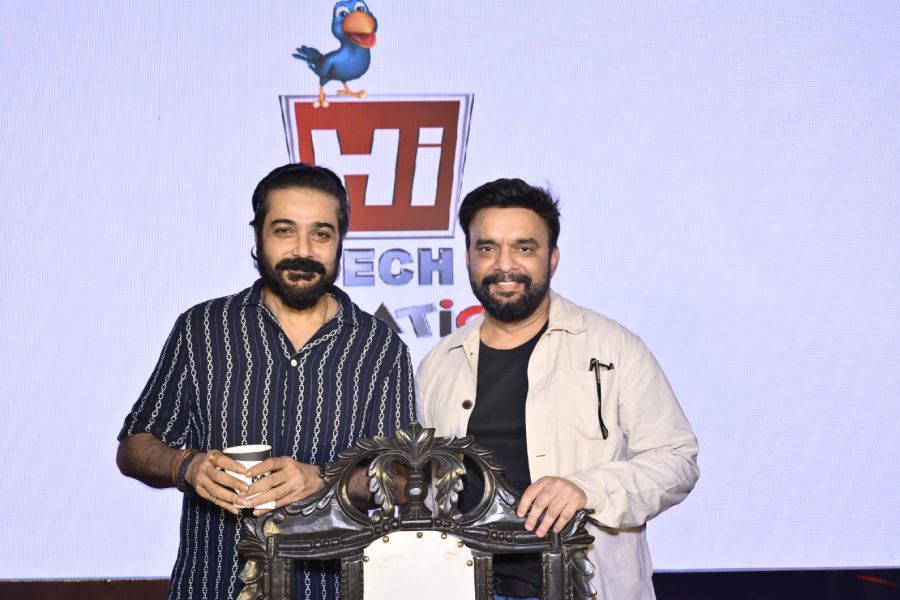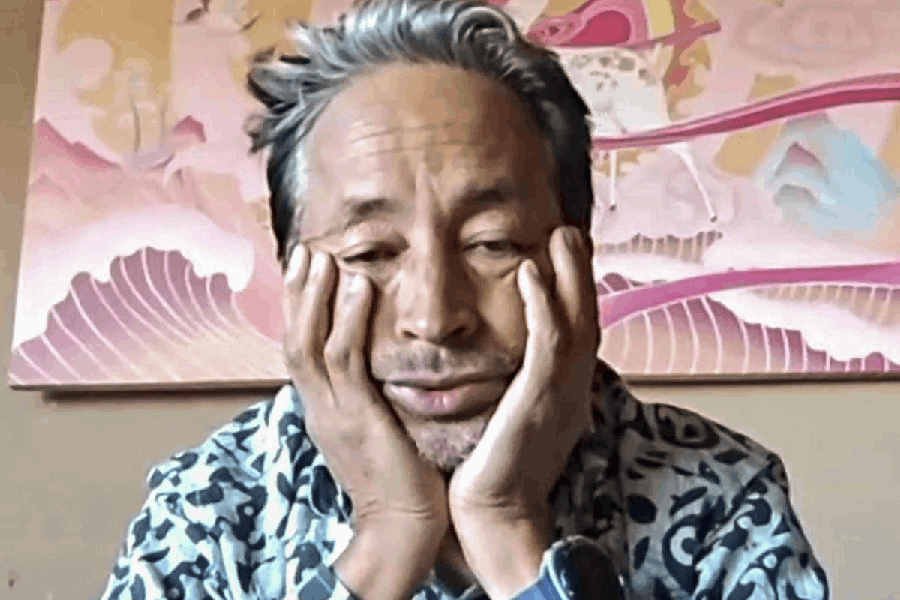 |
 |
The range of colours in the Jadopatia paintings are mostly golden yellow, purple and blue, which are derived from natural products like leaves of certain plants, soil and flowers found abundantly in the region.
The range of colours may be limited, but the lores surrounding these paintings are many, and as fascinating as the paintings.
The word Jadopatia is actually derived from two words — Jado, which is a Santhal word meaning artist, and Patta, meaning scroll.
In Jharkhand, these paintings are found mostly in the Santhal parganas, with most of their painters living in the outskirts of the tribal villages. One of the lores about the Jados (not necessarily Santhals), is that they would wander from one hamlet to the other, painting tribal themes on pattas, which were generally six to 10 ft in length and eight to 12 inch in width.
The words of a Santhali song when translated reads — Jogi, you can travel anywhere, please make a portrait of my dead parents. Through their paintings, the women wished the artists to depict the life stories of their dead parents. The Jado would then sketch the departed souls wandering in Hanapuri, which in Santhali means the world after death.
The jados would, however, not give their works away so easily to those who commissioned them. There are interesting stories regarding this, too. Apparently, they eagerly wait for deaths in the villages nearby. For death means for them an income. One of the rituals involved the Jados drawing portraits of the dead man, which they would, but without the pupils in place. The pupils they would draw only when paid a price. The Jados would also accompany a bride to her new home, and on returning draw on a scroll a depiction of the bride’s conjugal happiness, to assure the parents their daughter was happy.
Not just in Jharkhand, such paintings are also found in Bengal, Orissa and Madhya Pradesh. In Orissa and Madhya Pradesh they are called Patta Chitra.
The then British official R. V. Russell and Hiralal, a local artist who worked extensively on the tribes of the Central Province (1916), had traced the origin of Jadopatia paintings to the Chitrakathis of Maharashtra, who had adopted it to paint and describe different occasions of this world and also the “other world”.
According to Basudev Besra, a noted scholar of Santhali, the paintings have a long-standing history and go back to the reign of Chandragupta Maurya. The earliest mention of these paintings is said to be in Kautilya’s Arthashastra, mentioned as Yama Patta. Often, it is said, the hidden messages in the paintings were for espionage.
Two artists, Kamalapati Chitrakar and Ganpati Chitrakar, from Massaliya block in Dumka, who were felicitated by the east zone art and culture centre, Calcutta, in 2005 feel the art has survived, though today the themes are much more varied. Traditionally, they go back years, but their abstract forms and themes, actually make them quite modern in style, said Lalit Mohan Roy, an artist. Many of the artists have now changed professions, and the tradition is said to be dying.
But, one is sure the stories associated with it still have a long way to travel and fascinate people.











